#or folklore encyclopedia actually ..
Explore tagged Tumblr posts
Text
Honestly ya'll I really dislike the Encyclopedia of Fairies by Bane Theresa, she essentially just went through world mythology and just slapped the fae label onto anything that has any sort of connection with nature and it's so INFRIATING how it directly calls something as being apart of the fae but then within the fucking books own energy itself it directly contradicts itself by mentioning they're a completely different nonhuman species entirely, IT REALLY JUST ANNOYS THE FUCK OUT OF ME😭 I've been thinking about kind of creating my own like speculative classification system for mythological beings purely out of spite for this one book tbh
I personally think she's one of the writers that have influenced this idea that some people have about the "fae existing on every single continent" belief that I've seen some Celtic pagans regurgitate and it honestly doesn't really sit right with me since yeah if you're just casting the net as wide as fucking possible and including every single nonhuman being that's even remotely connected with nature then of course you're gonna come to that conclusion 💀
I've been getting into like speculative biology so this has been on my mind for the last couple of days and just how absolutely disorganized all of the actual classifications for mythological & fictional monsters/beings actually is so I might end up just cobbling together my own methods cuz my autism hates how vague it all ends up being and also how it can sometimes be used negatively against other cultures and is kind of a colonization tactic that's been used for a really long time most notably by the Romans and later on by the colonial powers so even though there's no actual intention to do harm it's somewhat rooted in not great methods if that makes sense?
Kind of just wanted to spew my thoughts on this topic a little bit since it's made me realize how unhelpful the overall classification system for what is/isn't fae is just nonexistent so I wanted to prompt everyone with the following question: what traits do ya'll think something has to have either in their behaviors, traits, use of magic, and appearances for it to actually be classified as being apart of the fae?
#druidicentropy's rambles#classification system#Bane Theresa#great methods#book tbh#actual intention#nonhuman species#Encyclopedia of Fairies#Romans mentioned#INFRIATING#book#mythology#folklore#european folklore#fae#system#nature#nature deities#celtic paganism#paganism#british folklore#celtic folklore
4 notes
·
View notes
Text
Master thesis progress : I currently have 67 pages (37k words) of quotes of various articles and books, but still *checks* one (1) page of only abstract, for a thesis that should be between 45 and 80 pages, due in September, but I have to send an introduction and a couple of chapters to my thesis director before the end of the month preferably.
Going swimmingly. Research is great. Writing? That's going to be hell.
Anyway, the Greenwood Encyclopedia of Folktales and Fairy Tales is the most fascinating non-fiction book I've ever read and my dream of doing a PhD in Folklore studies is taking on a new, more realistic shape.

#rapha talks#academia#adventures in academia#master thesis#cultural studies#folklore studies#the greenwood encyclopedia of folktales and fairy tales#lost in the research#maybe i shouldn't be wasting so much time on the encyclopedia when i still have other papers on the other themes of the thesis to read#but it is truly fascinating and enlightening and anyway i've always been deeply invested in the research part of academia#more than in the actual redacting and argumenting part
5 notes
·
View notes
Text
for future reference btw...

#or folklore encyclopedia actually ..#if you can't get the moon that's okay. a moonstone would work fine#but also: vintage bottlecaps‚ pressed flowers‚ ruby rings‚ lamb plushie‚ lace nightgown... candles <3#/ large image
0 notes
Note
What notable books (or author) on folklore and/or mythology would you consider to have reliable info, and which ones definitely don't? It's a broad ask, but what are the first names that come to mind?
Very good ask! I'll try to see if I can put my thoughts in words, but if you need any further examples or evaluations let me know.
Here's a general rule: primary sources are Good. Books that directly reference primary sources are Good. The more distance between a book and the primary source, the less reliable it gets. Always ask yourself, where is this book getting its information from? How does it present this information? If you're not dealing with primary sources, always check to see how information is presented and where possible errors could creep in.
For example...
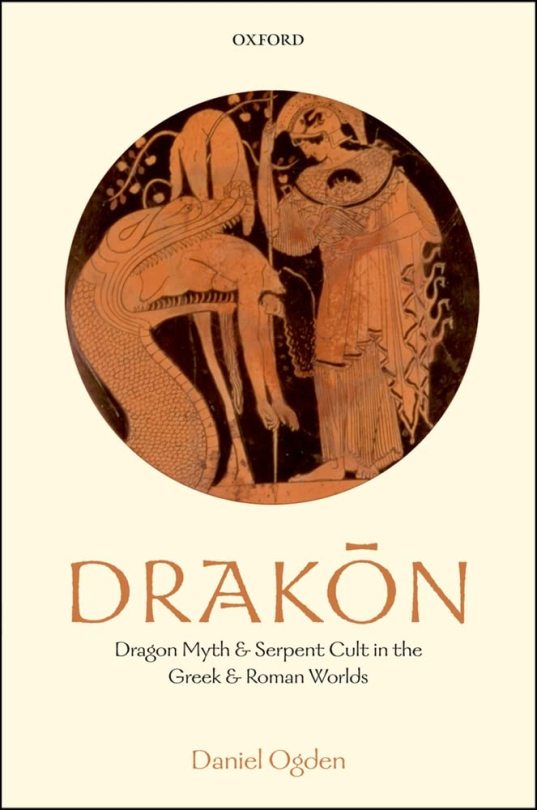

Books like these are the gold standard for reliability. If I was handing out ratings, they would score a perfect 5 out of 5. Everything is extensively cited (the second book is practically all citations). You can't go wrong with these.
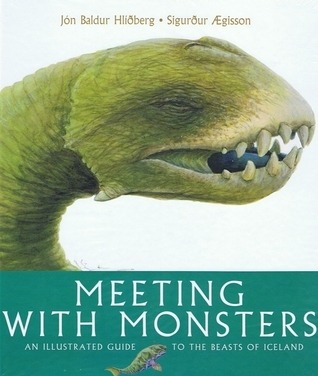
In general the more specialized a book is, the more reliable it is. So the excellent Meeting With Monsters gets a very respectable 4.5 out of 5. Very detailed info just about Icelandic monsters. Why not 5? The authors engage in some speculative creature building where they treat the monsters as real animals and invent features for them (the hrosshvalur has dorsal spines teeming with bacteria that infect the wounds it causes, for instance). But these are restricted to marginal notes and do not interfere with the actual information.
More general books generally get less reliable. Again, ask, where are those sources? What are they?

This one is often held up as the encyclopedia of mythical creatures currently in print. It's a decent starting point to start looking for things. It has sources and each entry is linked to its sources. The entries are written in a dry, concise encyclopedic style. But it relies far too much on second and third (and fourth, etc) hand sources. Scratch a little past the surface and you start finding weird mistakes, errors, inaccuracies. Snowballing misinformation. I would consider this to be of average reliability at best. A 2.5 out of 5 or so. Best used as a suggestion to dig into deeper, better things.

This one is a broad introduction to dragons, but instead of an encyclopedia, each "entry" (chapter?) is presented as a retelling of that story. And with that comes very low reliability and heavy use of secondary sources. The retellings make stuff up that isn't anywhere in the originals and miss a lot of the point of the stories - and spread misinformation that continues to propagate online. Also there's plenty of cryptozoology in there so eeehhhh.

This one is obviously aimed at a younger audience, but I'm mentioning it because of one amusing detail. It seems to be a good introduction for children to dragon mythology. Except it presents with a straight face the marsupial dragon as a dragon from Australia. The marsupial dragon, you know, which was written into Dragonology as a joke? And Dragonology wouldn't even have made my primary-source-reliability anyway! Some due-diligence was not duly diligenced, if I may say so.
Then there are books that are just... confusing.
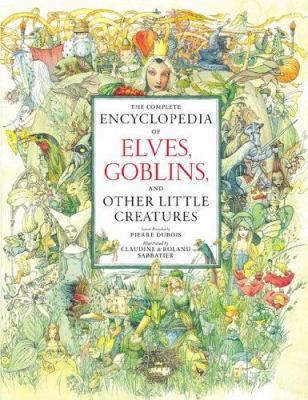
Like anything by Pierre Dubois. On the surface they seem well-researched. But the references and cross-references are more opaque than... uh... a very opaque thing. He clearly has a lot of them, but it's anyone's guess where the information he got came from (no cross-referencing, you see). Combine that with him just making stuff up to pad page numbers and it's never clear what is "true" and what he wrote (and some of it is distasteful, not going to lie). Sometimes he even misses the interesting part of legends just to write his own stories. The most charitable take is that this is literary fantasy, and maybe what he's said can be traced to actual reliable folkloric sources, but after having used him as a source of information I cannot recommend him. You could also argue that Dubois never does claim that this is a scholarly reference, but it sure is presented as one.

I have so far restricted myself to books that claim (or seem to claim) to be references on myth, legend, and folklore. Books that engage in speculative "creature building" (e.g. Dragonology, The Flight of Dragons, etc) would not be reliable as references, but they're still great books. You just wouldn't use them as sources of information.
... or would you? Sometimes non-reference books get treated as such, and then the information they made up gets reified by being parroted uncritically by later books. Like Woodruff's book above. A fake "long-lost expedition journal" by Pliny the Elder, it's an excuse for (gorgeous) art and Latin practice. Except that some of the made-up stuff in there found its way out of the book and - uncited - ended up in supposedly serious works. Like the Pyrallis being a dragon, or the two-headed Hyperborean frogs. Confusing. It even got a minor news mention because people were taking it seriously!
Anyway, how about you? Any books you find reliable or unreliable?
90 notes
·
View notes
Text

All the books I read this year! I don't differentiate between audio, paper, or digital for my list so it varies. book list and my faves below!
Title list and whether they're a Yes No or Maybe book
Nevernight - Jay Kristoff - YES
Book of Night - Holly Black - YES
Iron Widow - Xiran Jay Zhao - YES
Emily Wilde's Encyclopedia of Fairies - Heather Fawcett - YES
Godsgrave - Jay Kristoff - YES
The Fifth Season - N. K. Jemisin -YES
Longshadow - Olivia Atwater -YES
Valiant - Holly Black - YES
Queen Takes Knights - Joely Sue Burkhart - MAYBE
The Princess and the Goblin - George MacDonald - MAYBE
Crown Duel - Sherwood Smith - MAYBE
Court Duel - Sherwood Smith - YES
Vicious - V. E. Schwab - YES
The Obelisk Gate - N. K. Jemisin - YES
Nettle and Bone - T. Kingfisher - YES
The Stone Sky - N. K. Jemisin - YES
The Wolf and the Woodsman - Ava Reid - MAYBE
House of Salt and Sorrows - Erin A. Craig - YES
Darkdawn - Jay Kristoff - YES
Annihilation - Jeff VanderMeer - YES
Gallant - V. E. Schwab - YES
The Boneless Mercies - April Genevieve Tucholke - MAYBE
Six Crimson Cranes - Elizabeth Lim - MAYBE
The Dragon's Promise - Elizabeth Lim - MAYBE
Spin the Dawn - Elizabeth Lim -YES
Frankenstein - Mary Shelley - YES
Emily Wilde's Map of the Otherlands - Heather Fawcett - YES
A Master of Djinn - P. Djeli Clark -YES
All the Stars and Teeth - Adalyn Grace - NO
The Mysterious Affair at Styles - Agatha Christie - MAYBE
Thornhedge - T. Kingfisher - YES
Spinning Silver - Naomi Novik -YES
Bury Your Gays - Chuck Tingle - YES
The Seventh Bride - T. Kingfisher - YES
Ink Blood Sister Scribe - Emma Torzs - YES
Mexican Gothic - Silvia Moreno-Garcia - YES
The Foxglove King - Hannah Whitten - NO
A House with Good Bones - T. Kingfisher - YES
Horrorstor - Grady Hendrix - MAYBE
His Majesty's Dragon - Naomi Novik - YES
A Wizard's Guide to Defensive Baking - T. Kingfisher - YES
These Violent Delights - Chloe Gong - NO
A Gentleman's Guide to Vice and Virtue - Mackenzie Lee- YES
Throne of Jade - Naomi Novik - MAYBE
A Strange and Stubborn Endurance - Foz Meadows - YES
Uprooted - Naomi Novik - YES
The Guided Wolves - Roshani Chokshi - MAYBE
The Warm Hands of Ghosts - Katherine Arden - YES
The Hundred Thousand Kingdoms - N. K. Jemisin - MAYBE
A Magic Steeped in Poison - Judy I. Lin - MAYBE
A Deal with the Elf King - Elise Kova - MAYBE
Black Powder War - Naomi Novik - YES
Empire of Ivory - Naomi Novik - YES
The Familiar - Leigh Bardugo - YES
My five star reads from this year with reviews that are longer than just a single word woohooooo
Emily Wilde's Encyclopedia of Fairies - Heather Fawcett - EXCELLENT COSY FANTASY. Emily is an autistic queen, Shadow is best boy, and Wendell is dramatic and flashy and I love him. Read if you like the Howl and Sophie (book version!!) dynamic or scary fairies more in line with the way they're presented in folklore.
The Fifth Season - N. K. Jemisin - CHANGED MY LIFE I THINK ABOUT THIS BOOK AT LEAST ONCE A WEEK. I literally don't know how to talk about the actual plot without giving things away but holy shit. just read it it's so good. Please investigate any trigger content that might be in this it has a lot!
Longshadow - Olivia Atwater - COSY REGENCY FANTASY ROMANCE!!! Honestly, any of Olivia Atwater's regency fairytales are super cute.
The Obelisk Gate - N. K. Jemisin - continues from the fifth season! also very good!!
Emily Wilde's Map of the Otherlands - Heather Fawcett - continues from EWEoF!
A Master of Djinn - P. Djeli Clark - DO ANY OF YOU LIKE BOOK WITH MULTIPLE LADIES WHO ARE SO SO COOL AND ALSO A STEAMPUNK-Y EGYPTIAN SETTING FULL OF DJINNS AND ANGELS AND MAGIC I am frothing at the mouth for more of this world ngl
Spinning Silver - Naomi Novik - MORE SUPER COOL LADIES but they're in medieval eastern europe, all three povs are super great and I like the understated romance
Mexican Gothic - Silvia Moreno-Garcia - Gothic heroines a la Jane Eyre combined with 1950's mexico. an excellent horror that has a surprisingly wholesome and endearing romance within it.
His Majesty's Dragon - Naomi Novik - NAPOLEONIC WARS BUT THERE ARE DRAGONS. This is the first in a series and because there are a fair amount of them the books themselves can seem a little slow paced but I didn't mind it.
A Wizard's Guide to Defensive Baking - T. Kingfisher - BREAD WIZARD AND HER GINGERBREAD MAN FAMILIAR SAVE THE FUCKING TOWN. really good look at how children navigate an adult world and the unfair expectations placed on them.
Uprooted - Naomi Novik - GIRL CREATURE AND BOY FAILURE I love the way this book explores people who fit outside the usual mode of learning or educational parameters.
The Warm Hands of Ghosts - Katherine Arden - exploration of a brother and sister's experiences in world war i. The prose and character study in this are incredible.
#books#im not tagging all of them lol#this post is mostly so I can doodle some of the characters from my faves and reblog it to my art blog teehee
39 notes
·
View notes
Text
The giant sea creature Hafstrambi [Icelandic folklore]

Sailors sometimes claimed to have seen a strange, giant creature rising out of the sea near Greenland. This enigmatic marine monster would stand tall out of the water, like a pillar of flesh, and the people named it Hafstrambi (meaning something along the lines of ‘Sea Stack’).
Though sightings were a rare occurrence, the people learned that the creature was an omen: seeing Hafstrambi was a sure sign that a storm would soon follow. And after showing itself to a ship, the creature would turn before diving back into the sea. It is said that if Hafstrambi turned in the direction of the ship, one or more of the crewmembers of that vessel would soon perish. Conversely, if Hafstrambi turned away from the boat, the crew would have a safe trip.
The first mention of this creature is from the ‘Konungs Skuggsjá’, or ‘King’s Mirror’, a Norwegian text written around 1270. Every source I could find cited this work, so it might actually be the only mention of Hafstrambi.
Perhaps the most curious thing about this entity is its appearance: the creature has a human-like head, shoulders and neck, and a face with a nose, eyes and a mouth, but the top of its head resembles a spiked helmet. Though it has shoulders, Hafstrambi does not appear to have visible arms or hands.

The creature’s body narrows from the shoulders down, giving it the shape of a giant icicle, the bottom of which has never been seen. The author of the King’s Mirror speculated that it might have a fish-like tail, or perhaps it ends in a narrow pole. Despite this, modern depictions (of which there aren’t a lot) portray Hafstrambi the other way around with a broad base, like a giant fleshy pillar rising out of the depths.
This colossal living pillar seems to be mostly a modern interpretation, although the original 13th century description did not mention a size, only that it was giant.
Claude Lecouteux has theorized that the Hafstrambi later became conflated with the Kraken, a more well-known giant sea monster.
Sources:
Friis, E. J. (general editor), 1917, The King’s Mirror (Speculum Regale – Konungs Skuggsjá), translated from the old Norse with introduction and notes by Laurence Marcellus Larson, Twayne Publishers, Inc & the American-Scandinavian Foundation, p. 135-136.
Sigurðsson, A., 2016, Museum of Hidden Beings: A Guide to Icelandic Creatures of Myth and Legend, Wool of Bat series, Eye of Newt Press, 80 pp., p. 18-19.
Lecouteux, C., 2016, Encyclopedia of Norse and Germanic Folklore, Mythology, and Magic, 352 pp.
(Source of both images: Yngvar, NorseRemembers / Arngrímur Sigurðsson)
#Icelandic mythology#Nordic mythology#Sea monsters#Monsters#Creatures#Giant fleshy pillars rising out of the depths to signal the coming of a storm#mythical creatures#mythology
66 notes
·
View notes
Note
I know that folkloric vampires don’t turn into bats, but into other animals like moths.
what do you know about the different animals’ traditional’ vampires can turn into?
Is there any theme amongst them like being nocturnal?
That is actually rather difficult to answer… Vampire folklore is very diverse and when folklorists (and translators) decide a certain creature is a vampire, it varies which attributes they find most important (being a revenant, drinking blood, being killed with a stake, etc.). So the first problem is that there are many creatures across many cultures classified as vampires that could also be called ghosts, witches, demons, or spirits. And some of those are generally believed to possess magic, or to be able to take any shape they want.
Another complication is that certain animals may be associated with vampires, without them ever changing into them. In Greek folklore a cat jumping over a corpse would doom it to be revived as a vampire after burial (Avdikos, Vampire Stories in Greece and the Reinforcement of Socio-Cultural Norms, 2023). Anthropologist Willem de Blécourt remarks that in “the lands south of the Carpathians” the concepts of werewolves and vampires are too much intertwined to compare them to English werewolves (de Blécourt, I would have eaten you too, 2007).
The next problem is that I have not read a lot of reliable sources on local vampire legends. Books written for entertainment rarely cite their sources well enough to be trustworthy, and scholarly works take more time to find, acquire, and sometimes translate, than I have ever devoted specifically to vampires.
Personally I do not know any folktales where a vampire turns into an animal. But then, vampires in folktales are not always what we think of as vampires now, and may just eat corpses (Afanasyev/Guterman, The Vampire), be undead warlocks (Afanasyev/Ralston, The Soldier and the Vampire), or undead princesses suffering from demonic possession (Nisbet Bain, The Vampire and St. Michael).
Of course this doesn’t mean folkloric vampires didn’t shapeshift! There are many folklore concepts that exist in folk belief and anecdotes more than in complete stories. Especially concerning various Slavic folklore the general consensus is that vampires do shapeshift, but I could not tell you whether this is inherent to vampirism, or to the more general demonic powers that they often likewise possess.
Matthew Bunson states that “vampires can turn into bats, cats, dogs, wolves, butterflies, insects, rats, birds, fleas, mice, and locusts”. But his 1993 publication The Vampire Encyclopedia is exactly one of those - admittedly fun - works without citations.
I have read here and there that: the Albanian shtriga can transform into a moth, fly or bee, some Slavic – specifically Serbian – vampires can turn into a butterfly, the German nachzehrer is sometimes said to rise from the grave in the shape of a pig, the Romanian pricolici was once human but turns into a vampiric wolf, and the Jewish alukah is a living vampire that can turn into a wolf. Proposed explanations as to why these particular animals, usually have something to do with a cultural link between the animal and the concept of evil, death, disease, or destruction. But I don’t know enough about any of these examples to speak on their accuracy or their origin/explanation with confidence.
#a bit of a let-down. I'm sorry anon#I do have Alan Dundes vampire casebook on my wishlist this year#maybe there will be some good information in there#as far as I can tell the earliest literary vampires to shapeshift are Carmilla (1872)#who is implied to turn into a monstrous cat#and Dracula (1897) who can turn into a large dog and a bat
30 notes
·
View notes
Text
In the show H2O: Just Add Water, Cleo's transformation in the bath has some folkloric origins.
Cleo's transformation in a bathtub is actually an older motif in folklore.
Melusine, the well-known French water-maid with a fish-, serpent-, or twin-tail who was cursed to transform each Saturday into her true form instead of her human one, would hide from her lover Raymondin when she would be about to transform. She would transform in her bath only, hidden away from anyone. Melusine had told Raymondin that she would be together with him only on the condition that he must not look after her when she would be in her bath. In northern Spain, Asturias, a version of the legend tells of an enchanted freshwater-maiden called xana who is said to transform into a full serpent instead. More versions exist too, obviously.
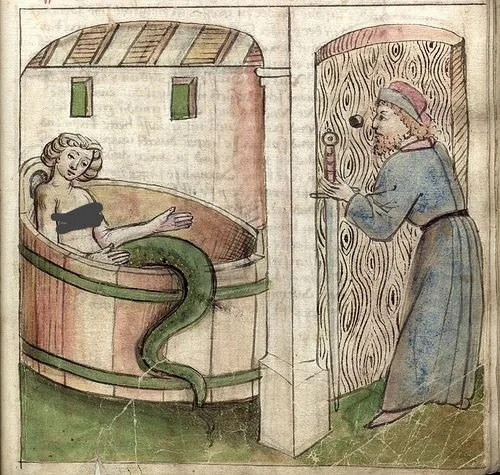
Raymondin discovers Melusine's SEAcret later on... Image: Edited "Melusine in her bath" as in Thüring von Ringoltingen's retelling in 1456.
The zeemeermin van Edam of Dutch folklore was once caught by humans when the dikes broke in the city of Edam and was forced to comply with society, being taught numerous things the humans did like wearing clothing and spinning. The zeemeermin would have her tail in the water and was described to have it in a tub of water underneath her chair, specifically made for her.
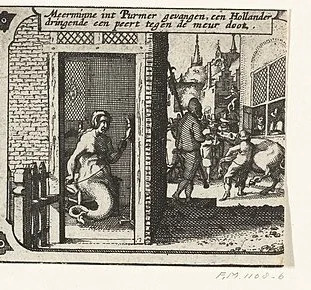
"Zeemermin captured in the Purmer" etching from the years 1608-1610.
She seemed to have legs ashore as depicted in some illustrations, but I'm not sure if she could transform.
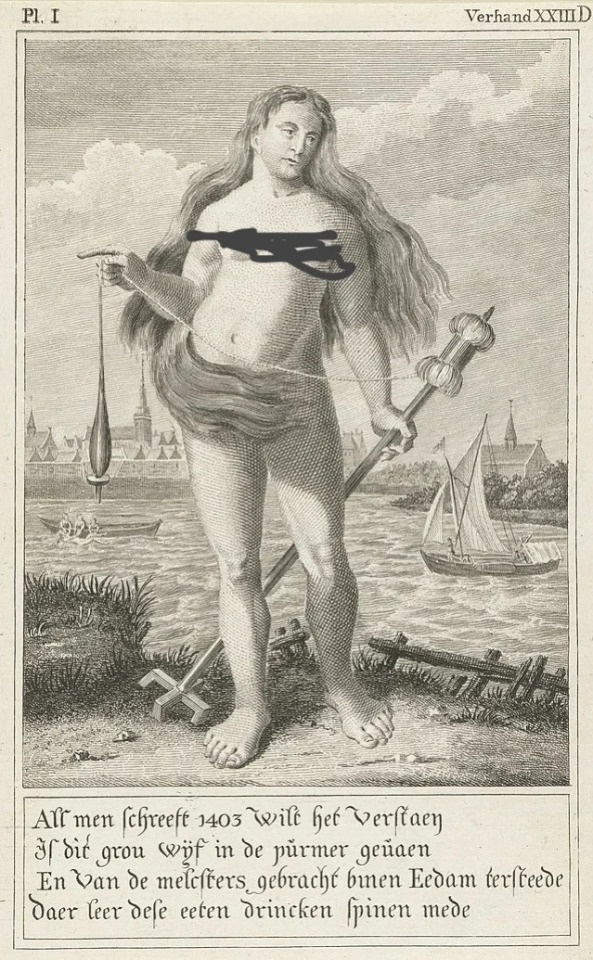
Edited "Zeemermin Van Edam" etching from 1784 - 1786.
I had edited the images because... not sure about whether it's ok to show the y'know*.*
Some sources: A Dutch Mermaid - Beachcombing's Bizarre History Blog https://www.strangehistory.net/2012/03/24/a-dutch-mermaid/ ,
Melusine - World History Encyclopedia https://www.worldhistory.org/Melusine/ ,
Seres mitológicos asturianos: Las Xanas - Misterios y Leyendas de Galicia y Asturias https://misteriosleyendasdegaliciayasturias.wordpress.com/2018/03/29/seres-mitologicos-asturianos-las-xanas/
I had originally published this on reddit via r/JustAddWater: https://www.reddit.com/r/JustAddWater/comments/1eo3a8p/cleos_transformation_in_the_bath_has_some/
32 notes
·
View notes
Note
goose... do you have any facts about the tanuki..... (youre the animal encyclopedia in my eyes🙏)
Of course I do!
Tanukis, also known as raccoon dogs, are a species of canid that are found in Asia, the two species of tanukis are the Japanese raccoon dog and the common raccoon dog/Chinese raccoon dog
Tanukis look similar to raccoons and they’re named raccoon dogs because they look similar, but they aren’t actually that closely related! Like I mentioned before, tanukis are canines so they’re more closely related to dogs and wolves, while raccoons are more closely related to coatis and mustelids(a genus that includes animals like weasels, otters, skunks, and badgers)
Tanukis are one of the(or the only) canine that hibernates, and they hibernate communally by snuggling together. They’re also monogamous!
They’re very popular in Japanese folklore and are often depicted as being shapeshifters and tricksters, and in Japanese folklore they also symbolize prosperity and economic growth(look up “tanukis in Japanese folklore” at your own risk though… it’s for the sake of your eyes)
Tanukis have a summer coat and a winter coat, their summer coats are obviously very short and they look more dog-like with it, and their winter coat is VERYY fluffy


14 notes
·
View notes
Text
REVIEW: Hoodoo Herbal by Starr Casas
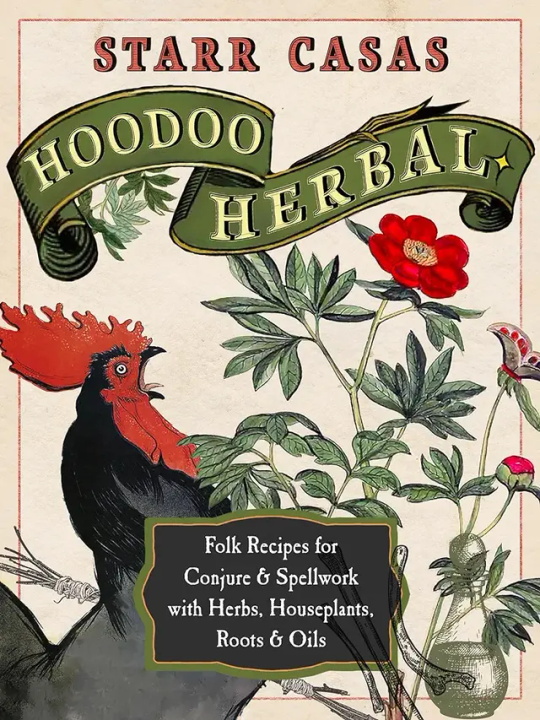
One thing that I think sometimes gets lost when we talk about Southern folk magic is that there's a lot of regional variation within the Southern US. Appalachian folklore and folk magic is trendy right now, but Appalachian traditions are actually very different from what other communities in the South are doing. While authors like Rebecca Beyer and Jake Richards do a great job of documenting Southern Appalachian lore, I think Starr Casas is one of the most high profile authors who covers what I would consider Deep South folk magic.
I know some people have issues with Casas, and I personally don't agree with her on everything (for example, she uses the words "hoodoo" and "conjure" interchangeably, while I use "hoodoo" specifically to refer to African American practices), but she is clearly very dedicated to documenting traditional Southern conjure as it was taught to her, and I can respect that.
This book is an herbal, and like most herbals, it's somewhere in between a spellbook and an encyclopedia. This is not a Conjure 101 book. Instead, this is a book for people who are already familiar with the basics and who want a reference book where they can quickly look up the lore and uses of different plants and curios in this tradition.
Pros:
• Like Casas's other books, this is very authentic to traditional conjure in the Deep South. She covers things in her books I learned growing up here but have never seen written down anywhere else.
• Very comprehensive. This book covers most basic herbs, but also goes into how to work with houseplants, curios, and Biblical figures.
• Great breakdown of the hot/cold and sweet/bitter system used in conjure, and explains how to choose herbs for a work based on these properties.
• Easy to use as a reference book. It's easy to flip back and forth to find information about a specific plant or curio. I read this as an ebook, which made it even easier to look things up by searching specific words.
Cons:
• Casas is very insistent that conjure must be passed down in person from an elder and is kind of condescending about people who learn conjure from books. This feels... not exactly like gatekeeping, because I see the point she's trying to make, but it rubs me the wrong way. I mean, the people in my family who knew this lore and practiced these works all died before I was born, and my parents and grandparents weren't interested in learning. My only option has been to reconstruct a personal/family conjure tradition based on local lore, talking to other workers, and yes, reading books. And while yes, I think books alone can only take you so far, I think we should acknowledge that not everyone has access to an in-person teacher.
• The other reason this bothers me is because Casas says her motivation for writing her books is to keep traditional conjure alive as the tradition's elders are aging and dying. So if she's aware that elders are dying without passing on what they know, why the insistence that true conjure can only be learned in person? Why write the books at all, then?
Other/Miscellaneous Observations:
• Casas feels very strongly that Christianity and the Bible are essential to conjure. If you do not feel the same, this book will piss you off.
• Casas is from Texas, and while I definitely consider her work more Deep South than Southwestern, there are some regional influences there. For example, Casas works with Catholic saints in an otherwise very Protestant magic tradition.
• Despite the above observations, Casas makes it very clear that she is not overly fond of churches and does not think you have to be a church-goer to practice conjure. She also talks about how she has taught conjure to people who aren't Christian, in case anyone was worried about that angle.
Conclusion: This is a solid reference book and a great collection of plant lore from the Southern US. I'm always happy to add books to my shelf that don't just parrot Western European herbalism, and it's nice to read a book that has info on New World plants. I have more issues with the philosophy/politics of this book than I did with Old Style Conjure by the same author, but this book does do a good job of showing what traditional conjure looks like. I recommend this as a reference for Southern US plant and curio lore, but definitely balance your perspective by picking up books from other authors and looking at other sides of the conversation.
Rating: 3/5 Stars
#book review#books#starr casas#conjure#southern folk magic#southern conjure#folk magic#folk witchcraft#witchcraft#witch#witchblr
25 notes
·
View notes
Text
Let’s turn up the heat because I’m going over the real-life inspirations for all the fire-type starter Pokémon. Here are the links for when I covered the inspirations for all grass starters, all fish, and all non-fish aquatic Pokémon.
Gen I gives us quite possibly the most iconic starter line: the Charmander line. Interviews with the design team have revealed that Charizard was the first of the line to be designed and the other two were designed by working backwards from it. Both Charmander’s English and Japanese name (Hitokage) reference the mythical salamander of European folklore. Salamanders have been associated with fire in multiple cultural folklores throughout Europe, often to the point where their depictions have nothing to do with the actual amphibians. Interestingly, the oldest accounts that associate salamanders with fire comes from Pliny the Elder, who repeated an account their bodies were so cold they could extinguish fires. Somewhere along the line of legends being passed down, salamanders got flipped from repelling fire to living in it, possibly as a result of getting conflated with other mythical reptilians like dragons or basilisks. In the renaissance, the alchemist Paracelsus described salamanders as fire elementals, along with a group of other elemental beings (gnomes for earth, sylphs of air, and undines of water).
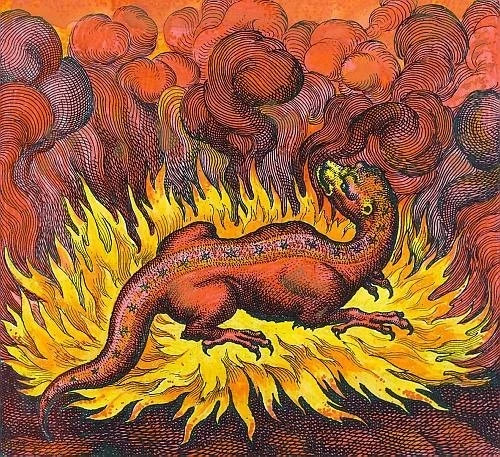
(image: an artistic depiction of a fiery salamander. Art by Michael Maier)
In addition to salamanders, Charmander and Charmeleon are given the upright poses and dragging tails of outdated reconstructions of theropod dinosaurs. Charizard is a classic depiction of a western dragon: a winged reptile that breathes fire. Western dragons are based heavily on lizards, with some of the earliest depictions being a dead ringer for monitor lizards. Charizard is said to love fighting, which is reminiscent of how western dragons have been depicted as dangerous, destructive, and even demonic monsters. It is only relatively recently that western dragons have been depicted as anything but evil. Charizard doesn’t have the dragon type (unless it mega evolves to X form), but that’s more because back in gen I, dragon was intended to be the special type exclusive to the late-game powerhouses that are the Dratini line. Charizards mega evolutions and gigantamax form don’t really add much to the origin, they’re just exaggerations of Charizard.

(image: art of a western dragon by Friedrich Justin Bertuch)
Cyndaquil is based on an echidna, an Australian monotreme (egg-laying mammal) that has a long snout and quills like a porcupine.
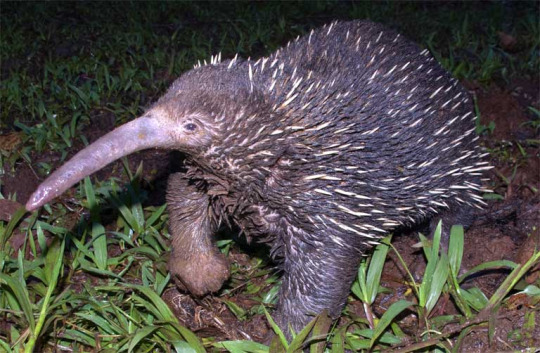
(image: a long-beaked echidna. I don't know why, but its snout makes me very uncomfortable)
Despite being an echidna, its species name is the Fire Mouse Pokémon. This is actually a hint to an additional inspiration for its origin. The Japanese word that got translated to “Fire Mouse” is “Hinezumi”. This is the Japanese name for a monster originating in Chinese legend called the “huǒshǔ”. It’s a flaming mouse that lives in volcanoes. The flaming mammal and volcano association continues through the line. Also, when I googled “hinezumi” the first thing that popped up was the Monster Girl Encyclopedia. If you know, you know (don’t google it). Quilava and Typhlosion completely drop the echidna inspiration, which is a bit disappointing to me. That’s why I made regional variants of them for my Australia/New Zealand fakemon region where they stay as echidnas. While being based on badgers, they retain the quills that are found in many animals, most famously porcupines and hedgehogs. Hisuian Typhlosion is based on Kamuy-huci, the Ainu goddess of the hearth. The Ainu are the indigenous people of Hokkaido, the island that inspired Sinnoh and Hisui. There are multiple Ainu references in Hisui’s design, plot, and regional variants. In the Ainu religion, the hearth was the connection between Earth and the world of spirits and was therefore never allowed to go out. It could also be used to communicate with the kamuy (gods and spirits) and was the passage through which the souls of the dead would leave the world and eventually return for reincarnation. This is why Hisuian Typhlosion is part ghost-type. The fire around H Typhlosion’s neck looks like magatama beads, which are used in the spiritual practices of multiple belief systems. These flames can release 108 ghost lights. 108 is an important number in Buddhism and is the number of beads in a Japamala, another type of beaded necklace used for spiritual practices in (among other religions) certain types of Buddhism.

(image: a japamala with wood beads)
The Torchic line is, I suspect, the place where the trend of basing fire starters on Chinese zodiac animals started. Typhlosion really doesn’t fit the zodiac, though some people say it’s supposed to be the mouse. The line is based on chickens. More specifically, they are based on the basan, a legendary fire-breathing chicken.
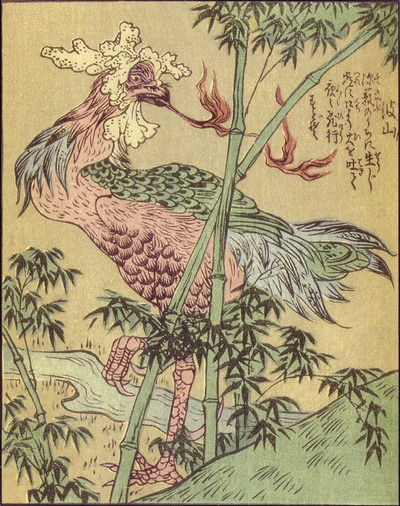
(image: art of a basan by Takehara Shunsen)
Torchic is a chick, a hatchling chicken. It being bright orange comes from a tradition of dying chicks bright colors to be sold at festivals. Male Torchics have a tiny black spot on their rear ends that females don’t. This is probably based on vent sexing, a technique for determining the sex of chocks, a notoriously difficult task. It is done by examining the cloaca, looking for a bump that usually only males have. Combusken and Blaziken are based on cockfighting, a form of animal abuse where people force chickens to fight and bet on the winners. The official art for Blaziken’s normal and mega evolved forms have it in poses used in the martial art of Muay Thai. Blaziken is usually depicted as fighting primarily with kicks and Muay Thai emphasizes kicking. Blaziken being an humanoid with a bird head may also reference the bird-headed Egyptian gods Horus and Ra, or off of the karura, a diving being that looks like a human with a bird’s head in Japanese mythology.
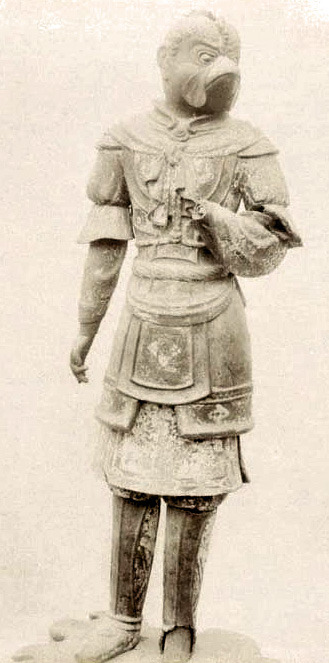
(image: a statue of a karura)
The Chimchar line are based on the monkey from the zodiac. Chimchar’s species name is the Chimp Pokémon, and it does bare some resemblance to a young chimpanzee. When Chimchar’s flame goes out, you can see prominent red marking on its butt. Several monkey species have marking on their hindquarters, but the most famous by far is the baboon. Chimchar’s lack of a tail identifies it as an ape, but its evolved from gain tails, making them monkeys. A lot of people think that apes are separate from monkeys, but really apes are a subset of old-world monkeys. Apes are monkeys, you are an ape, therefore you are a monkey and that’s nothing to be ashamed of. Monferno and Infernape both have prominent facial markings heavily reminiscent of those of mandrills.
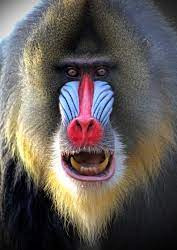
(image: a male mandrill's face)
Monferno having blue facial marking and orange fur also makes it look like a golden snub-nosed monkey.
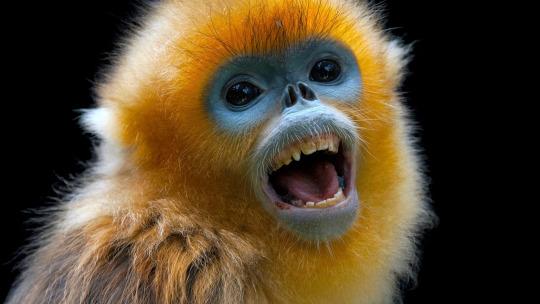
(Image: a golden snub-nosed monkey's face)
These are native to China and the line does have some heavy Chinese influence. The martial art that Monferno and Infernape use is most likely Monkey Kung Fu or Hóu Quán, which was inspired by the movements of monkeys. Infernape is based on the character of Son Goku, the Japanese name for the character Sun Wukong from the Chinese epic novel Journey to the West. Sun Wukong is the king of all monkeys, a martial artist, and has several magic powers.
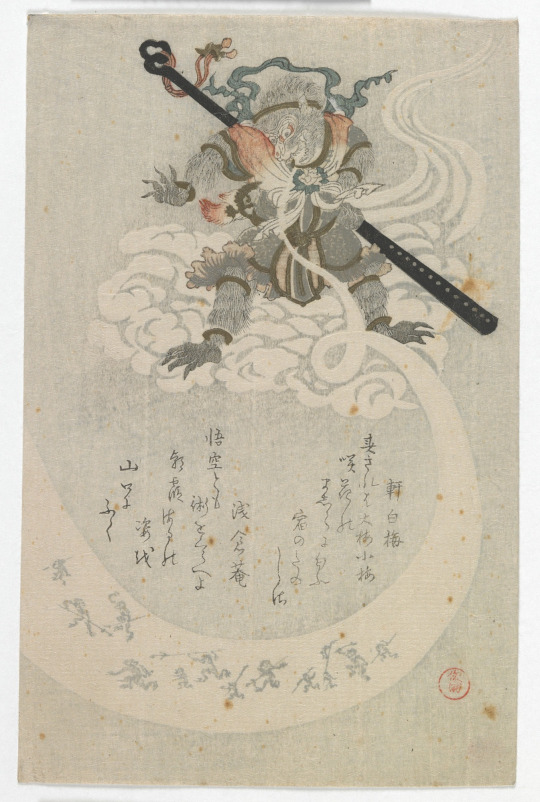
(image: Japanse art of Son Goku/Sun Wukong. Art by Shunman Kubo)
Sun Wukong may be based on the older Hindu god Hanuman, a monkey-like god associated with strength and heroism who was also a member of the varana, a species of monkey people.

(image: a sculpture of Hanuman)
The Tepig line are based on the boar of the zodiac. Ken Sugimori said that the Unova starters were based on different cultures to reflect Unova being a very diverse place. The Tepig line were given Chinese design elements whole the Snivy line were “western” and the Oshawott line were Japanese. Tepig having a dark marking on its head and rear but being light everywhere else comes from the markings of the British Saddleback pig breed.
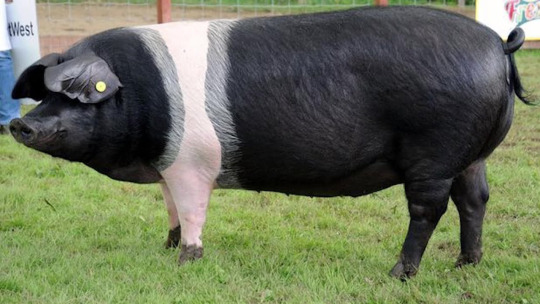
(image: a British saddleback pig)
The fire and pig combination references how pigs are bad at regulating their body head and need to use external sources like mud to cool off. Pignite takes on more boar traits with its exposed tusks. The markings on its body look like it is dressed in a wrestling singlet, which fits as both Pignite and Emboar are based on wrestlers. The yellow markings on Pignite and Emboar resemble patters found in ancient Chinese cauldrons called dings.
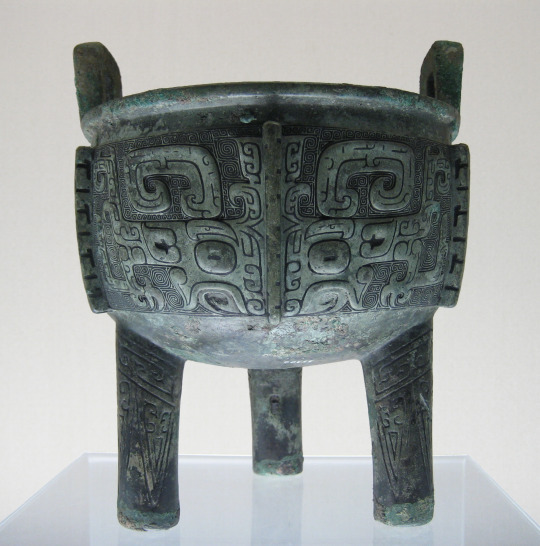
(image: a ding)
Ken Sugimori also stated Emboar was inspired by the character Zhang Fei in the Chinese novel Romance of the Three Kingdoms. In the story, Zhang Fei is betrayed and decapitated by his own men. This could be the purpose of the fire scarf Emboar has, to separate its head from its body. Pignte and Emboar also draw from another Chinese story, the afore-mentioned Journey to the West, specifically the character of Zhu Baije. Zhu Baije is a pig man who joins the titular journey. He is also jealous of Sun Wukong, which kind of fits with how Emboar is a much worse Pokémon than Infernape.
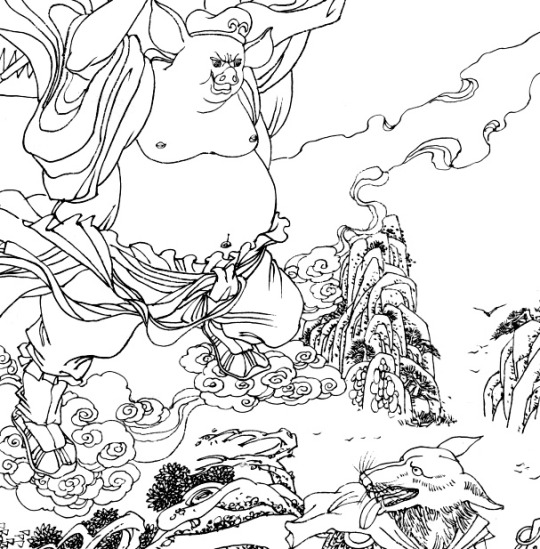
(image: an artists depiction of Zhu Baije. Unknown artist)
The Fennekin like take the place of the fox in the zodiac. Design-wise, their large ears mark them as being based on fennec foxes. They are also based off of the kitsune, magical foxes in Japanese mythology. Among the many powers attributed to kitsune were the ability to breathe fire and perform magic. Kitsune could also take on the form of human women, which is referenced in Fennekin’s evolutions becoming humanoid and having feminine designs.
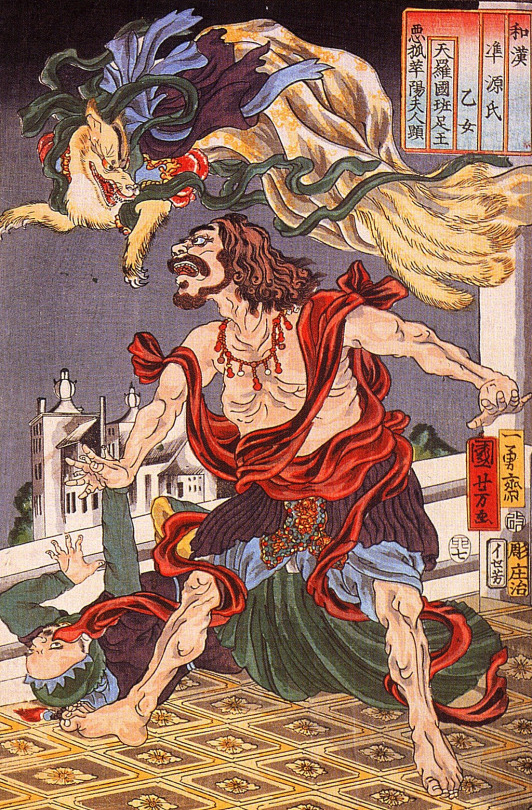
(image: art of a Kitsune scaring two people by Utagawa Kuniyoshi)
Human could also learn magic form foxes, becoming fox witches or kitsune-mochi/kitsune-tsukai. Braixen and Delphox take quite a bit of their design from these fox witches, they also draw from the classic wester witch, using magic wands and Braixen having a tail that looks like the head of a flying broomstick. The association of witches with fire might be a reference to witch burnings. Delphox is also based on a prophet or seer, with its ability to see the future. Delphox’s English name directly references the ancient Greek oracle at Delphi. The final forms of the Kalos starters are based on the fantasy character archetypes of the fighter, the mage, and the thief. Delphox is very much the mage.
Litten is a black cat with tabby cat features. Tabby cats are defined by the stripes on their faces and legs. The orange and black stripes also identify it as the tiger from the zodiac. Its eyes plus forehead stripes are a dead ringer for the alchemical symbol for brimstone, another name for sulfur. Sulfur is a highly flammable element, fitting the fire type. This is one of several references to alchemy found in gen VII.

(image: the alchemical symbol for brimstone. two horizontal lines crossed by a vertical line that leads down into an infinity symbol)
Torracat doesn’t change much from Litten, just adding more stripes and a fireball that looks like a bell on a cat’s collar. It does change when it evolves to Incineroar, and not for the better. Incineroar is my least favorite final stage starter and easily in my top 10 most hated Pokémon. I could go on for a while about how much I hate it, but this isn’t the post for that. It’s still a tiger, but now it has been combined with a professional wrestler. You can tell they really wanted to do another fire/fighting type but knew there would be backlash. The belt of fire is based on a championship belt and its dark type comes from being a heel. In wrestling language, a heel is a villainous character, someone the audience is supposed to boo (a face is a heroic character). This fits with Incineroar being describes as a violent and egotistical Pokémon. However, Incineroar does have a soft side. This fits with how wrestlers are performers playing characters. A performer playing a heel character may cheat, lie, steal, and generally be an asshole while in character, but when not in character they probably won’t be nearly as unpleasant a person.
Scorbunny is the rabbit of the zodiac. More specifically, it is a white rabbit and like with real rabbits, its feet are considered good luck charms. The yellow patch on its face comes from a Japanese character design trope where a bandage over the nose is supposed to indicate that the character is tough and rambunctious. Maylene from the Sinnoh games shares this design element. Its fire typing could come from the Jataka tales, a collection of Buddhist stories from India. In tale 316, a rabbit is placed in a fire as a burnt offering, but it is unharmed by the flame. Another connection could come from the fact that rabbits have unusually high body temperatures for mammals. If Scorbunny is cheerful child, Raboot is a moody teenager. It’s fur and the stripe on its head look like a tracksuit and headband, giving it a connection to athletics. This continues with Cinderace, who is now an association football (or soccer to Americans) player. Football is a huge deal in England, the basis for Galar. Its fur looks like athlete’s attire and it uses a flaming berry like a football. This is another one where you can tell they wanted to make another fire/fighting type.
The Fuecoco line ditched the zodiac theme to become a crocodile. Its upright posture makes it look like a chibified theropod dinosaur and its silhouette looks like a chili pepper. The white face of both Fuecoco and Crocalor resembles a calavera, skull imagery used in the Mexican Day of the Dead. This is a Mexican holiday which is a celebration of dead loved ones that is typically very spirited and cheerful as opposed to glum and mournful. Folklore says the ghost will return to the world of the living on the Day of the Dead. While Paldea is based on Spain and Portugal, several of the new Pokémon have designs based on elements from central and south America, possibly because of both countries’ history of colonialism in those areas. Crocalor adds several references to mariachi players. The flaming nest and egg on its head is a sombrero while the markings on its abdomen look like a traje cordobés, a type of vest often used in mariachi.
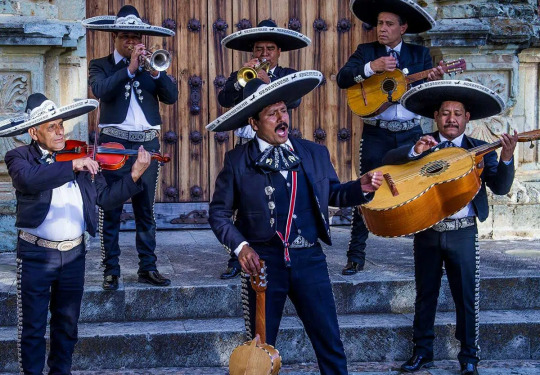
(image: a mariachi band wearing wests and sombreros)
The hat combined with the calavera face makes it look like La Calavera Catrina, a skeleton wearing a wide-brimmed hat that is used as a common symbol in the Day of the Dead.
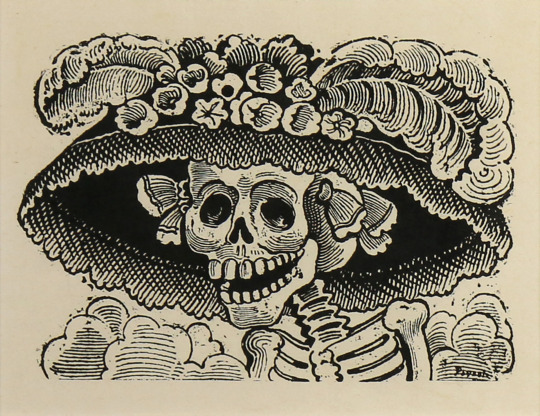
(image: art of La Calavera Catriana by José Guadalupe Posado)
It could also be a bouquet of Tagetes erects, the Mexican marigold, a flow also used for the Day of the Dead. Skeledirge continues the mariachi and Day of the Dead theme by becoming an undead singing crocodile. Real crocodiles will vocalize during mating and nesting season. There are several stories of ghostly or monstrous crocodiles in Spanish folklore, such as the Cocollona and the Drac de Na Coca, the latter of which is displayed as a taxidermied specimen in a museum in the city of Palma de Mallorca. There is also the Coco or Cuca, a boogieman-like that originated in Spain and Portugal and spread to the Americas that is often depicted as a monstrous crocodile. All three of the Paldea starters are based on entertainers and Skeledirge is based on a singer. Given its typing and English name, it probably single funeral dirges. The fiery bird on its nose could come from the gharial, another type of crocodilian. Male gharials have large bumps on the tips of their snouts in the same spot the bird sits.
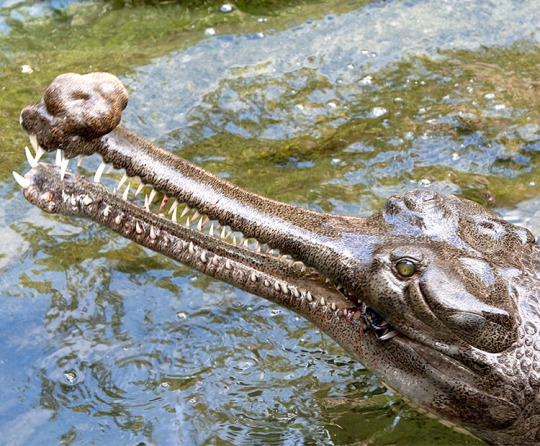
(image: a male gharial)
Another, possibly more likely source is the Egyptian plover, a bird that will land on top of Nile crocodiles and eat parasites off of their skin. Skeledirge could also be based off of alebrijes, very colorful statues of mythical creatures in Mexican folk art. This is making me think about how cool a Mexico-based region could be.
#pokemon#pokemon origins#pokemon lore#fire type#fire starter#charmander#cyndaquil#torchic#chimchar#tepig#fennekin#litten#scorbunny#fuecoco#charizard#typhlosion#hisuian typhlosion#blaziken#infernape#emboar#delphox#incineroar#cinderace#skeledirge
45 notes
·
View notes
Text
𓂃˖ ࣪ 𝔠𝔬𝔪𝔭𝔞𝔱𝔦𝔟𝔦𝔩𝔦𝔱𝔶 𝔯𝔢𝔞𝔡𝔦𝔫𝔤
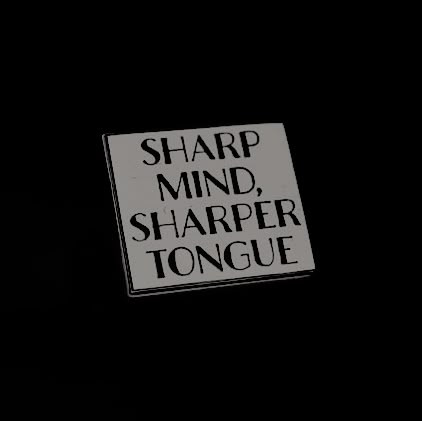


˚₊‧꒰ა @darylsluvrr ☆ sam winchester ໒꒱ ‧₊˚ ⋆˙⟡ where virgo, cancer, sagittarius meets taurus, virgo*, capricorn. ⟡˙⋆
𖤐⭒๋࣭ ⭑✧˖⋆𖤐⭒๋࣭ ⭑✧˖⋆𖤐⭒๋࣭ ⭑✧˖⋆𖤐⭒๋࣭ ⭑✧˖⋆𖤐⭒๋࣭ ⭑✧˖⋆𖤐⭒๋࣭ ⭑✧˖⋆𖤐⭒๋࣭ ⭑✧˖⋆𖤐
ꔛ. meeting each other,
with your virgo sun and sagittarius moon, you're both practical and restless--you need structure, but you crave adventure. and somehow, that's exactly what leads you straight into sam's path. maybe, you're researching something--a weird pattern of disappearances, old folklore, something that doesn't add up. and sam? he's doing the same thing. you're at some dodgy library, papers spread out, eyes flicking over faded text when-- "that book's actually a mistranslation," you glance up, one brow raised. the tallest man you've ever seen is standing there, arms crossed, looking like a walking encyclopedia. "oh?" you tap the page, unimpressed. "you got a better source?" sam smirks. "i might," and just like that, you're hooked.
ꔛ. friendship compatibility,
this friendship is a perfect mix of intellectual debates, mutual encouragement, and shared sarcasm. your virgo sun and mercury libra mean you love learning, discussing, and analyzing things. and sam? he's all about that life. you two could talk for hours, unraveling mysteries, sharing theories, and occasionally roasting dean for his terrible latin pronunciation. but here's the kicker--your sagittarius moon and mars add a wild streak to your otherwise analytical nature. you push sam out of his comfort zone, drag him into spontaneous road trips, convince him to break rules just for the hell of it. and he? he keeps you grounded when your impulsiveness gets out of control. there's also emotional depth here--your sagittarius moon understands his capricorn moon. he struggles with vulnerability, with expressing how he feels, but you? you see through it. you challenge him, remind him that he doesn't have to carry everything alone. the only issue? sam overthinks everything, and sometimes, your fire-sign placements makes you impatiently call him out on it.
ꔛ. romantic compatibility,
strengths : your virgo sun and sagittarius moon create a fascinating dynamic with his taurus sun and capricorn moon. there's stability here--real, tangible stability. sam needs someone who understands his intensity without suffocating him. and you're the person that gets it. he's drawn to your energy, your fire, the way you challenge him. and you? you find comfort in his quiet strength, in the way he always thinks things through. plus, your venus in leo loves big, passionate romance--and sam loves hard. when he falls, he falls all the way. weaknesses : sam is stubborn, and your mars in sagittarius is impatient--which means arguments can be a mix of silent brooding ( him ) and explosive frustration ( you ). sometimes, he overanalyzes things while you just want to act. you'd have to find balance between his think first mentality and your jump now, think later approach. also, your venus in leo craves attention and grand gestures--and while sam adores you, he's not always great at showing it. you might have to drag the romance out of him sometimes. could it work ? absolutely. but only if you learn to slow down, and he learns to take risks--especially when it comes to love.
ꔛ. request, scenario
“you seriously brought four books for a four-hour drive?” sam barely glances up from the novel in his lap. “did you not bring anything to read?” you groan, stretching your legs across the seat. “no, because i thought i’d be talking to someone. Y’know, human interaction? Ever heard of it?” he smirks. “i can multitask.” “oh yeah?” you snatch the book from his hands before he can react. “then tell me what i just said.” sam exhales sharply, leaning back. “something about... me being antisocial?” you narrow your eyes. “lucky guess.” “not really,” he says, making a grab for the book. you dodge. “say please.” he levels you with the most unimpressed look. “are you seriously—” you dangle the book further out the window. “i dunno, sam. am i?” he stares at you for a long moment. then, finally— “...please.” grinning, you drop the book back in his lap. “see? wasn’t so hard, was it?” sam just shakes his head, a ghost of a smile on his lips.
ꔛ. overall, score : 9 / 10
the ultimate balance of fire and earth ! you challenge sam in all the right ways, pulling him out of his overthinking while he grounds your restless energy. the chemistry is undeniable, the banter is immaculate, and the connection runs deep. the only thing standing in the way? wether he can keep up with you--and wether you can slow down enough to meet him halfway.

ꔛ. navigation 𓂃˖ ࣪ all drabbles ; compatibility readings ; support my work .ᐟ
* since the birth time of sam hasn't ever been mentioned, I've placed him as a virgo rising, since it's the sign that makes more sense to me.
#compatibility reading#sam winchester x reader#sam winchester x you#sam winchester astrology#supernatural astrology
10 notes
·
View notes
Text
Veil
Richard Jackdaw x f!MC (Lila Kirke)


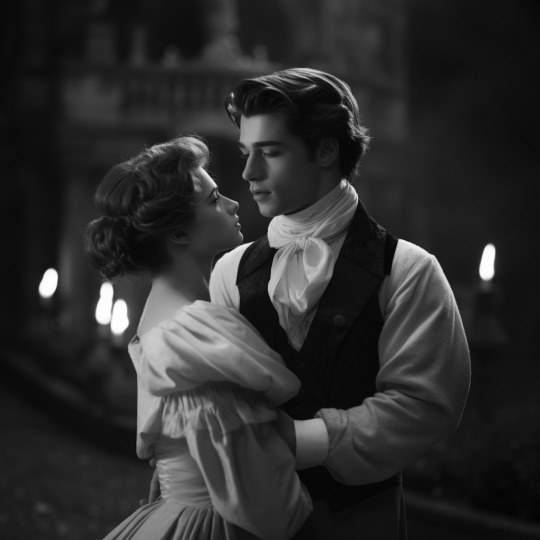
Chapter 6: A Search For The Impossible
Series tags: explicit | smut | pining | voyeurism | masturbation | sex | angst | death
Summary: Lila and Richard celebrate Valentine's day and attend a very special party together as Lila's distraction with a memory leads to a search with an unlikely ally.
Of all the people she could think of, the Slytherin who now stood by her side with his musky aftershave attacking her nostrils was the only one she thought might actually have an answer for her—with his thirst for knowledge, particularly in subjects less well traversed at the school, his mind was a veritable encyclopedia. “I thought I’d find you here again,” he said, leaning against the bookcase and regarding her. His eyes seemed to bore into her skull as she tried to concentrate on the various titles printed along the spines. “What are you up to? Don’t say it’s schoolwork, because-,” he snatched the book from the top of the pile she was clutching, flicking through the pages, “-Wizarding folklore? And what’s that, Alchemy?” “You’re right, it’s not schoolwork,” Lila sighed. “Are you up to something?” “I’m not up to something, merely curious about…,” Lila started, her eyes glancing furtively behind Sebastian’s head. “Look, can I pick your brain?”
25 notes
·
View notes
Text
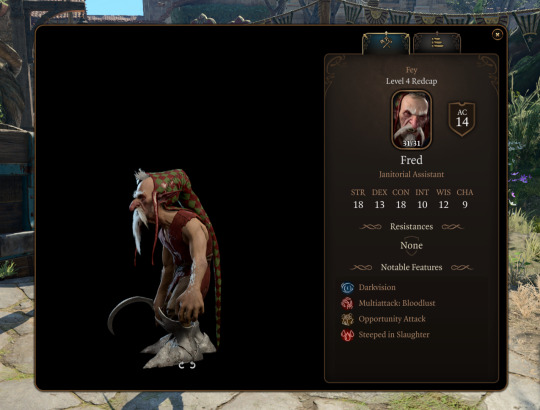
Folklore in Modern Media #1: Redcaps in Baldur's Gate 3
Baldur's Gate 3 is huge right now so this seems like a good place to start a series on depictions of folklore creatures in modern media. In classic folklore, a redcap is a malevolent type of goblin or spirit that lives in abandoned castles along the Scottish borders. They resemble old men wearing iron boots and pointed red hats (photo below from Fairies by Brian Froud). According to some folklore, redcaps dye their caps in the blood of their victims and that if their caps ever dry out, they perish.
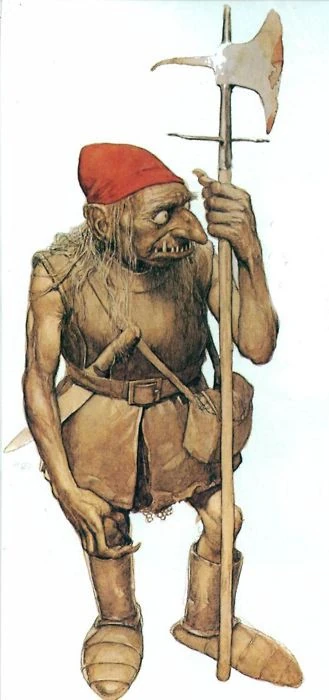
Redcaps are said to possess supernatural speed and strength. This strength combined with the redcap's violent nature makes these creatures very dangerous. According to William Henderson's Notes on the Folk-lore of the Northern Counties and Borders redcaps are known to carry pikes for weapons or simply throw stones from their castles at unwelcome guests. There is a trick, however, to defeating a redcap. One must recite lines of scripture and a redcap will flee or go up in flames.
In Baldur's Gate 3 the redcap matches the classic description of the folkloric goblin almost perfectly: pointed red cap, small stature, old wizened features, iron shoes, malicious personality. They also have high strength and an ability called ironbound pursuit which accurately convey the supernatural strength and speed this creature is known for.
One major difference lies in the creature's choice of weapon. In both BG3 and 5th edition Dungeons and Dragons (on which BG3 is based) the redcap uses a sickle rather than a pike. Another difference can be found in where the redcaps in BG3 are encountered. Some are found outside of a hag's hut and appear to be her servants. Others are found in a circus and, similarly, work there as servants. This is very different from the classic folklore of the lone spirit haunting an abandoned castle. There is precedent, however, for redcaps playing the role of servant. In Minstrelsy of the Scottish Border (Vol. 4) Walter Scott describes a specific redcap who was the familiar to a Scottish noble named William de Soulis.
I actually think the redcap is very well represented in BG3 (and by extension D&D) and it's nice to see a somewhat niche creature from Scottish folklore get the attention it deserves!
Sources:
Image:
Screenshot from Baldur's Gate 3
Alan Lee and Brian Froud. Faeries. 1978
Information:
William Henderson. Notes on the Folk-lore of the Northern Counties and Borders. 1866
Katherine Briggs. An Encyclopedia of Fairies. 1976
Walter Scott. Border Minstrelsy (Vol. 4). 1849
21 notes
·
View notes
Note
dear ashlynn,
i, chestnut, humbly apologise for ghosting you for a bit. however, it would seem that from today onwards i can breathe a little. hope you’re doing well (´♡`) and love your new theme! your worries about the upcoming arc are totally understandable but i know for sure you’ll eventually come up with a satisfactory course of events, as you usually do. if anything, i’m surprised at how well-paced tsfawc has been so far — especially since pacing is what a writer might struggle the most with when they work on their own. ultimately, tsfawc is all yours and i’m just happy to be here and watch it unfold.
on another note, i’ve recently been meaning to read more books that revolve around the fae (or european folklore in general) to rediscover the whimsy i lost to adolescence and emily wilde’s encyclopaedia of faeries really did it for me. i’m so glad tsfawc triggered this hyperfixation because i at least have something to keep me busy now, as i impatiently wait for part six to come out. since you’ve recommended holly black’s folk of the air series before i was thinking of extending my streak with it but i have yet to figure out how to get my sister to lend me her most cherished babies (the books.)
all in all, i suppose it’s impossible to please everyone when the stakes are high in a story but as long as you trust that the choices you made will reap the most satisfying results, you should be okay ♡ i’m also relieved to hear that you weren’t much affected by the bomb cyclone. keep warm and stay safe! (and if you have more fantasy books to recommend, i’m all ears!)
with much love,
chestnut 🌰
p.s. please tell me that receiving a letter from me makes your heart flutter like yeonjun’s do with mc or else… i threaten to cry uncontrollably.
omg!!!!!! hi baby!!! i’m so happy to see you in my inbox! not to say i was impatiently waiting, but i was impatiently waiting. i’m so happy you’re able to catch a break now, you deserve time to yourself!
i’m so glad you like the new theme, it took so much work but it just feels so right.
i’ve been so so so worried about how things are going to go, but i’m going to try and trust my intuition. you guys are darlings and know just what to say to comfort me. pacing is absolutely tough when you’re writing a story without editors or beta readers, but especially one this long and fleshed out being posted chapter by chapter, it’s a lot of pressure to not be able to go back on things if they’re constraining or end up running you into a dead end. i do a lot of work plotting to make sure that my story points don’t do that to me, that’s where most of my anxiety comes from, i believe. but the reward has been so unbelievably worth it, and i’m so happy with how the story has gone, so i’ll continue to do just that. i love the story and it’s so cool to have you guys there with me while i develop it.
european folklore genuinely has that FEELING that you lose when you grow up. i understand exactly what you mean. theyre some of the oldest stories in the world, that is hard to replicate or capture in stories today. it just has this whimsy that i am in love with. i 10000000% recommend reading the folk of the air when you can get your hands on it (the main story has three books, so renting from the library isn’t so bad if she doesn’t let you borrow, lol!) and honestly i think that it’ll itch a similar spot as TSFAWC. you’ll find a lot of similarities (like a LOT.) and i’m so glad to spread my authentic faerie agenda around. it’s such a fun form of fantasy that i think requires delicate attention to portray. i actually haven’t read emilia wilde’s encyclopedia but i REALLY want to. it’s on my tbr for sure. is it good?????? and for my reccs, i actually haven’t really found a fantasy world that replicates one similar to TSFAWC or the folk of the air, and usually fae are represented in a way that isn’t true to folklore (ahem sarah j maas) so i can’t help because i’m still searching myself 😣
i thank you so much for reading and coming to talk to me about your interests and about the story, it makes my heart feel so warm.
the rain wasn’t so bad really, the wind was eerie sounding in my house but otherwise, nothing i haven’t seen living in this wet state! thank you for checking on me, love 🩵🩵
(receiving this letter of an ask was absolutely heart-fluttering and just as romantic as yeonjun’s, i’m giggling and blushing and kicking my feet. kiss kiss!)
#tsfawc#to someone from a warm climate#﹙📃﹚༉‧₊ inbox#txt#txt fanfic#txt x reader#taehyun x reader#taehyun fanfic#fem reader txt#yeonjun ff#taehyun x female reader#𝓪𝙣𝙤𝙣 ; ﹙🌰﹚ chestnut anon
5 notes
·
View notes
Note
What are the gray and black animal that is with the clone all the time?
Good morning! (it's actually 2pm over here but I only just got up oops)
I'm not on the computer right now so I don't have my ref pics on me, but the creature in question (and I'm assuming you're talking about Beautiful at least) is a Barghest (the name of the species is a bit tricky because it's named after a creature from Northen English folklore, so googling it yields very few star wars related results).
They're a kind of alien animal kept as a guard dog (at least that's what Izby, the only specimen thus far, is described as being kept for), and considering how menacing they look with those six glowing red eyes, and that slobbering maw full of fangs, it's not hard to see why they'd make great guardian beasts.
I wish I could give you a lot more information on them (I'll admit these creatures have become a bit of an obsession of mine and I'm a little starved for more content of them), but sadly there really isn't much out about them. I mostly just apply the rule of thumb that if it serves a dog's purpose then it is a dog (look at massiffs as an example).
Honestly the only Barghest that has been seen/mentioned in canon (more specifically in the Force Awakens, the SW Encyclopedia and in one Han Solo comic) is Izby, Gwellis Bagnoro's pet and loyal companion. She's literally the only point of reference to her species, which means we don't even know if there's any sexual dimorphism or even different color morphs.
And yet the very brief instance of her existence was still enough for me to latch on.
Aha, sorry I started rambling a little, I just really really love Barghests and think theyre very underappreciated .
I'll add some images to this ask once I get on my PC. I gotta eat something first!
13 notes
·
View notes